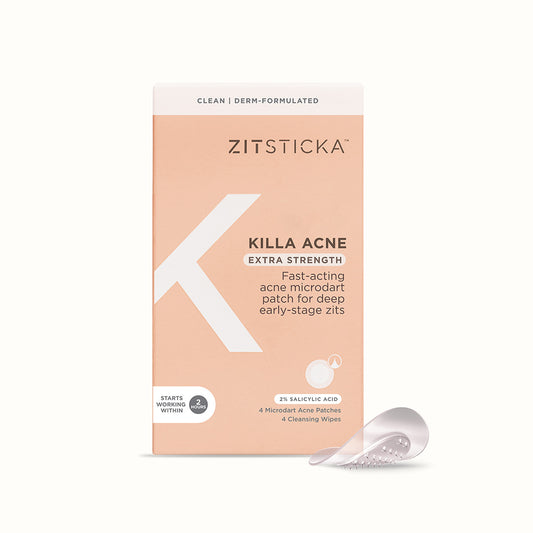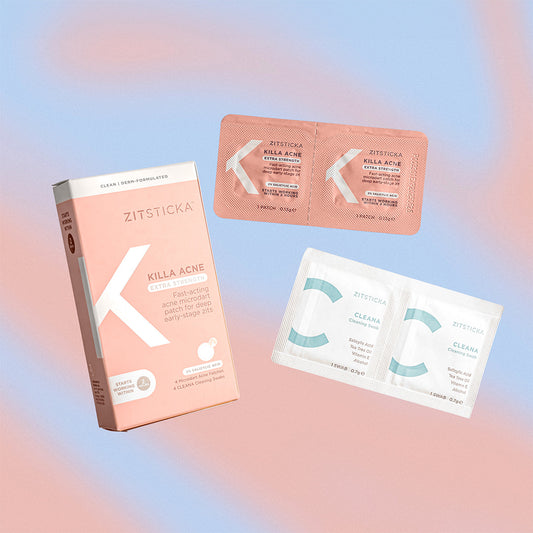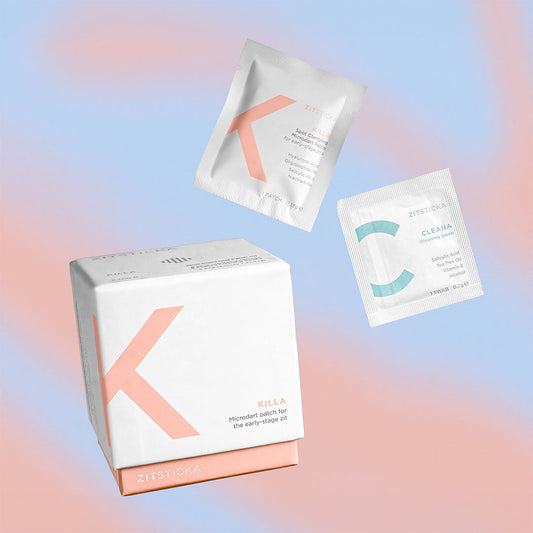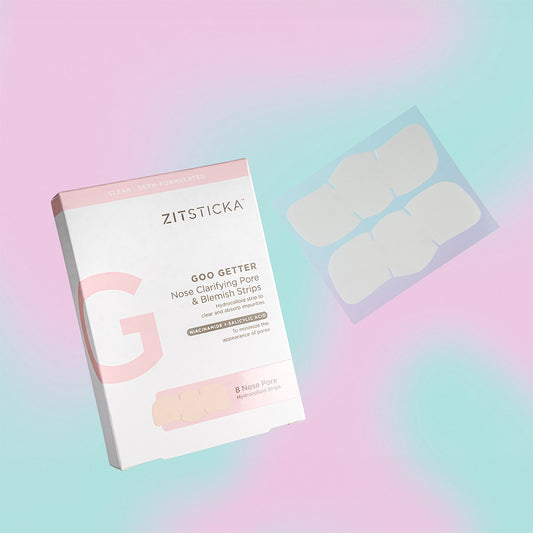In honor of World Mental Health Day this past week, we wanted to speak on a topic that all genders are prone to: Body Dysmorphia. Body Dysmorphia is a common disorder that can deeply affect one’s overall mental health. With conventional beauty standards at large, and more recently, the unattainable standards dictated by Instagram, the pressures to look *a certain way* have always existed, and continue to manifest in new ways. Given one of ZitSticka’s brand pillars is mental health, we feel a social responsibility to shed light on the reality of living with this disorder. We sat down with Nicola Pierre-Smith, a Licensed Therapist who is also the founder of Melanated Women’s Health, LLC, which provides a culturally affirming and anti-oppressive therapy space for people who have been marginalized because of their social identities. Please proceed below to learn more about body dysmorphia and all that comes with it.

Firstly, can you describe exactly what body dysmorphia is?
Body Dysmorphic Disorder (BDD) is a mental health diagnosis commonly referred to as “body dysmorphia”. It is categorized by preoccupation with a real or imagined flaw/imperfection in one’s appearance, which causes the person living with this condition to experience significant distress, psychological pain, and shame when navigating daily life. A few examples of a flaw or imperfection that can become the focus of preoccupation are: uneven skin texture/acne, facial symmetry, and shape or size of various body parts- nose, eyes, genitals, body build or muscularity, etc.
In extreme cases, body alterations or other cosmetic surgeries are completed to correct the flaw/imperfection that has been the focus of preoccupation. In other cases and if left untreated, people living with this condition tend to frequently check the flaw, compare themselves to others, and or engage in avoidance behaviors (e.g., avoiding mirrors, dating or other social interactions).
How do you know if you have body dysmorphia?
This condition is often confused with other medical and mental health conditions. Rather than taking the risk of inaccurately self- diagnosing, seek the help of a trained professional. If you find yourself constantly checking or avoiding mirrors, engaging in ritualized make-up application, excessive use of Facetune or other social media filters, obsession with cosmetic surgeries, difficulty getting dressed due to a desire to disguise parts of your body, or have fears about the functionality of parts of your body, you could benefit from a professional evaluation.
Do you think social media has played a role in the development of body dysmorphia?
At the moment we know that the condition usually begins in early adolescence when our sense of self is fragile because we are starting to become aware of our bodies and identities, relative to the people around us. This awareness begins to highlight the differences that makes us unique; no two people are exactly alike. Furthermore, young people are increasingly “growing up” online with direct exposure to Eurocentric beauty standards which is promoted on social media in the form of unnatural, surgically, or filtered images. This level of exposure and associated vanity metrics (e.g., likes and follow count) as well as cyber bullying, can cause differences that makes an individual unique be perceived as a flaw, imperfection or abnormality. Consequently, social media may influence the trajectory towards body dysmorphia.
However, it is difficult to determine cause and effect between the social media or usage of these platforms and body dysmorphia. Currently there is not enough empirical data or research to explicitly identify the role of social media on the development of body dysmorphia. Similarly, there is an absence of research on the positive benefits of exposure to medical and mental health content creators, as well as brands such as ZitSticka that are using their social media platforms to normalize and celebrate body differences on social media. Therefore, it is important to protect yourself from exposure to any content that may potentially contribute to body dysphoria by being intentional about the way you use social media.
What causes it?
Body dysphoria may be caused by a combination of issues, rather than one or two specific factors. A person who has other mental health conditions such as an eating disorder, generalized anxiety or clinical depression, history of trauma and excessive exposure to rigid expectations for beauty, may be at risk for developing body dysphoria. Additionally, a person who identifies as non-binary and is not provided with safe environments to express their gender, may also be at risk for developing body dysphoria.
Who experiences it? How common is it?
Information on the prevalence in the community is inconsistent. It is experienced by people of all genders, though it may be more common in populations based on demographics (eg., age, social identity etc.)
What is the difference between BDD and an eating disorder?
On the surface, BDD and eating disorders share a similar feature in that they both involve body image concerns. That is, an individual with either of these conditions has concerns with the perception, appearance, and or experience of being in their body. This similarity may cause confusion, which can be detrimental if not correctly identified or diagnosed. To highlight the difference, Eating Disorders have to be described.
Eating Disorders are characterized as a severe disturbance in eating behavior which typically falls into one of two types: (i) Anorexia Nervosa and (ii) Bulimia Nervosa, which are more commonly known as “anorexia” and “bulimia”. Anorexia Nervosa involves a refusal to maintain body weight that is “normal” for an individual’s age and weight, or efforts to maintain a weight that is less than 85% of the “normal” expected weight for that person’s age and height. Bulimia Nervosa involves persistent episodes of binge eating or lack of control of eating followed by unhealthy behaviors to prevent weight gain. Both of these eating disorders involve unhealthy compensatory behaviors (e.g., fasting, excessive exercising, induced vomiting, etc.).
Therefore, the difference between an Eating Disorder and body dysmorphia is that the former issue is a focus on weight and BDD is focused solely on specific body parts.
What are some words of wisdom you would give to someone who experiences body dysmorphia?
You are not alone in this experience and there are many professionals and support groups available to support you to develop a healthy relationship with your body. Your body is not your enemy. You can recover from the narratives and beliefs that have led you to become preoccupied with perceived flaws in parts of your body.
Thank you so much, Nicola! We don’t deserve you.
For a little body positivity, click here to read about cellulite, stretch marks, and why we love them.










